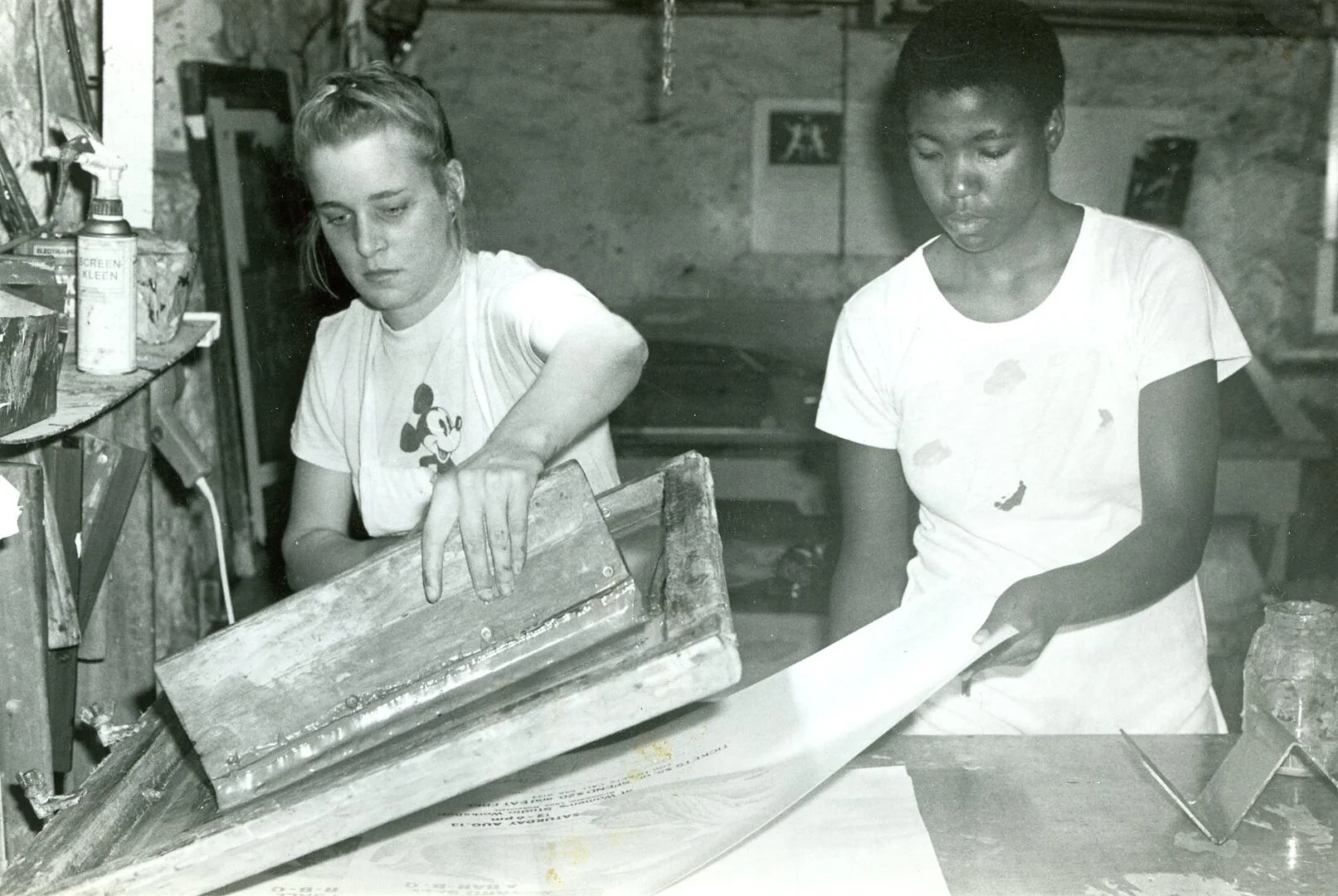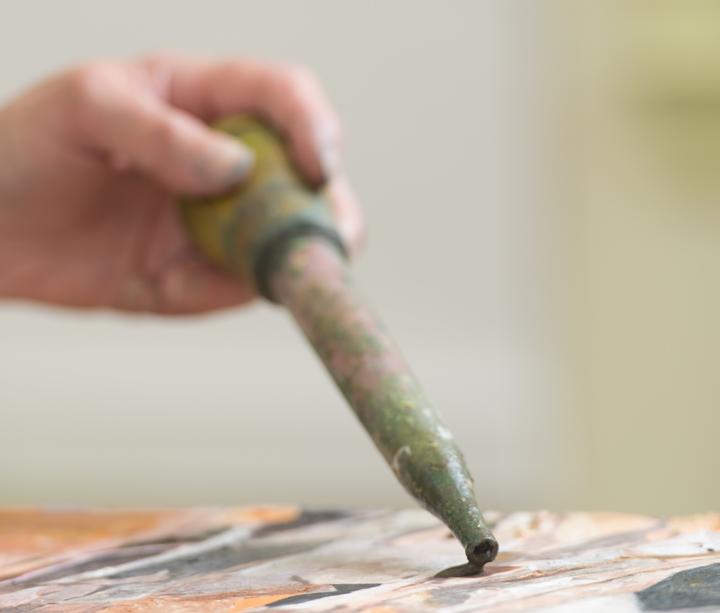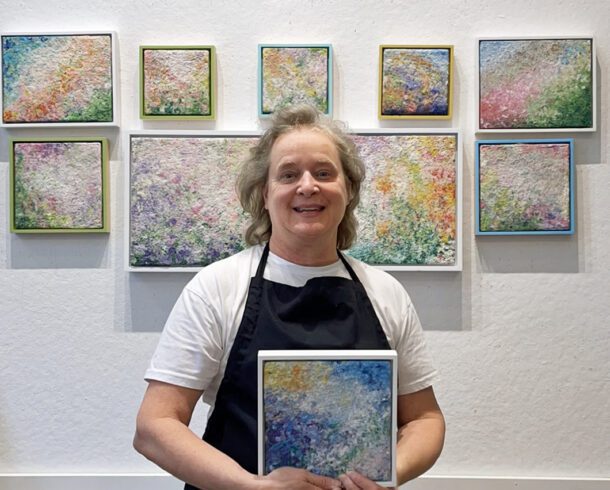MY STORY, or how did I get here anyway?
If there is one question I am asked more than any other, it’s this. Why would you make paper when you could go out and buy it?
The short answer is this:
I began my “career” as a pulp painter as an art student too broke to purchase commercially made paper, I hooked up a garbage disposal in a corner of the printmaking studio-pre-OCEA, it was the 1980’s after all-and used it to grind scraps of discarded paper into soggy pulp. At first, I formed the pulp back into some resemblance of paper, but eventually I began using different colored pulps to paint with. In this way, I took a material that had been intended to be the recipient of media and flipped it into the medium itself. My future as a pulp painter was off and running before I even had a name for what I was doing.

Working on a silkscreen print. I couldn’t find a photograph of me in the studio at SUNY Oswego where I was a student. I found this photo while I was an apprentice at the Women’s Studio Workshop, summer, 1983. I wrote a blog about this experience, which I remember as being very hard, and very worth it.

My go-to “paint brush,” a turkey baster. I suck the pulp up into the baster and gently squeeze it through the small opening. This process is like a sand painter who lets the colored sand dribble through their hands into an astonishingly controlled pattern. A twist on the old expression that it’s all in the wrist.
And what did I use as my paintbrush? Plastic spoons and turkey basters of course! With these simple tools I learned to distribute the pulp across the surface of the canvas to recreate the subject matter that most intrigued me: our emotional pull toward natural environments. From roiling seascapes and natural landscapes to blooming gardens and iridescent abstract forms, I found a way to express these places using lumpy pulp, turkey basters and plastic spoons.
Viewers often comment how much they love the texture in my artwork. My subject matter is nature, which is full of texture, color, and shapes. These qualities create the emotional pull nature has on us. The medium I currently use is abaca, an organic fiber used since ancient times to make rigging for ships, clothing, paper, tea bags, and more recently PPE during the pandemic. By using this organic material, I can recreate the many textures and colors of nature.
Many years have passed since those early days, but I still find myself intrigued by this expressive medium with all its perks and challenges. Little did I know way back then that my artwork would one day grace U.S. Embassies, university libraries, corporate boardrooms, and hospital nurses stations.
I went on to earn a Master of Fine Art, and a PhD in Art Educaiton. I have been a working artist and college level art educator for 35+ years.
If you would like to join me on my jouney, and purchase a work of art, or discuss a commison, please contact me. I’d love to work with you.
To learn more about my pulp painting process, watch the videos below.

Plastic spoons work wonders for adding detail and texture. I can blend the colors just enough using the palm of my hand as a palette and then gently applying to colored pulp onto the surface of the work.

